Self-driving cars are no longer just a concept in development—they are steadily becoming part of everyday transportation. These vehicles use advanced sensors, artificial intelligence, and constant data processing to navigate roads with minimal or no human input. The future of self-driving cars means safer, more efficient, and more accessible travel that changes how you move from place to place.
You see the shift already with driver-assist features in modern vehicles, but the path ahead involves higher levels of autonomy where cars handle entire trips without intervention. Companies across the automotive and tech industries continue to refine the technology, balancing innovation with safety, regulation, and infrastructure needs.
What makes this future compelling is not just the technology itself but how it will reshape daily life. From reducing accidents to lowering transportation costs, the potential impact reaches far beyond convenience. As adoption grows, your role in this transformation is less about driving and more about trusting the systems that drive for you.
Key Takeaways
- Self-driving cars operate on a spectrum of autonomy with growing capabilities.
- Advanced technology and infrastructure shape their progress.
- Safety, trust, and regulation remain central to their future adoption.
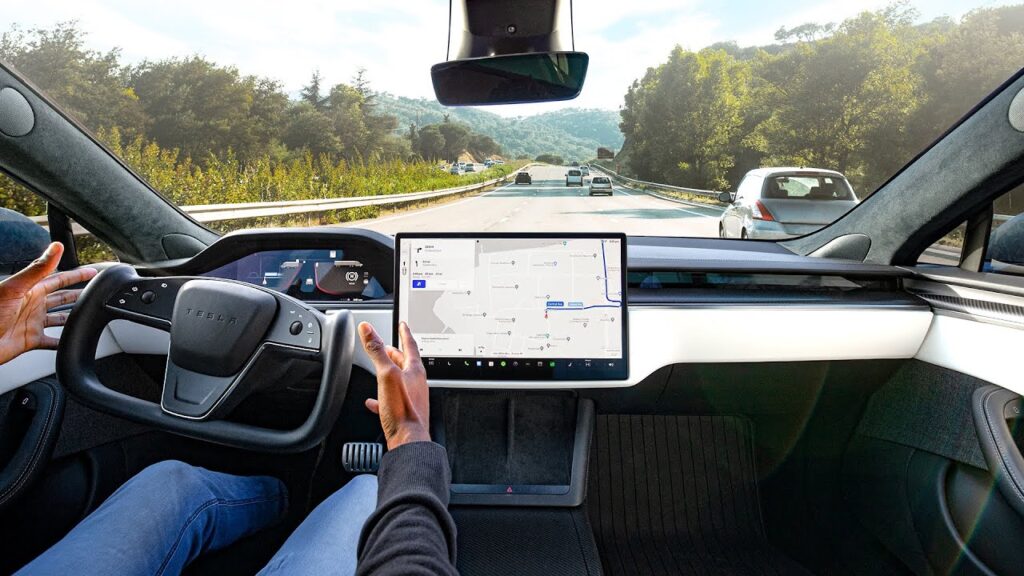
Defining Self-Driving Cars and Levels of Autonomy
Self-driving cars rely on sensors, software, and decision-making systems to handle driving tasks that once required human control. These vehicles are classified by levels of automation, which range from no assistance to full autonomy, and each level represents a different balance of responsibility between you and the vehicle.
What Makes a Vehicle Autonomous
An autonomous vehicle uses a combination of hardware and software to perceive its surroundings and make driving decisions. Key technologies include LiDAR, radar, cameras, and GPS, which provide data about road conditions, obstacles, and traffic.
You will also find machine learning models that process this data in real time. These models allow the vehicle to identify objects, predict movements, and choose safe driving actions.
Unlike traditional cars with driver-assistance features, autonomous vehicles can execute tasks such as steering, braking, and lane changes without your direct input. However, the extent of independence depends on the automation level.
Many modern vehicles already include adaptive cruise control or lane-keeping systems. These are not fully autonomous but represent the early steps toward higher levels of automation.
The Six Levels of Automation
The Society of Automotive Engineers (SAE) defines six levels of driving automation, from Level 0 to Level 5. Each level describes how much control shifts from you to the vehicle.
| Level | Description | Driver Role |
|---|---|---|
| 0 | No automation | You perform all tasks |
| 1 | Driver assistance (e.g., adaptive cruise control) | You stay engaged |
| 2 | Partial automation | Vehicle controls steering & speed, you monitor |
| 3 | Conditional automation | Vehicle drives, you must intervene if needed |
| 4 | High automation | Vehicle handles most conditions, minimal input |
| 5 | Full automation | No human input required in any situation |
These levels help you understand what to expect from a vehicle marketed as “self-driving.” They also guide regulators and the auto industry in setting safety and performance standards.
Conditional Automation Explained
Conditional automation, or Level 3, is a turning point in self-driving technology. At this stage, the vehicle can manage most driving tasks on its own under specific conditions, such as highway driving.
You are still required to remain available to take control. For example, if the system encounters construction zones or unusual weather, it may request that you resume driving.
This level is more advanced than partial automation, where you must constantly supervise. However, it is not as independent as Level 4, which can handle entire trips without your involvement in defined areas.
Manufacturers are cautious with Level 3 because it raises questions about legal responsibility and driver readiness. For you, it means convenience in predictable settings but continued responsibility in complex or unpredictable scenarios.
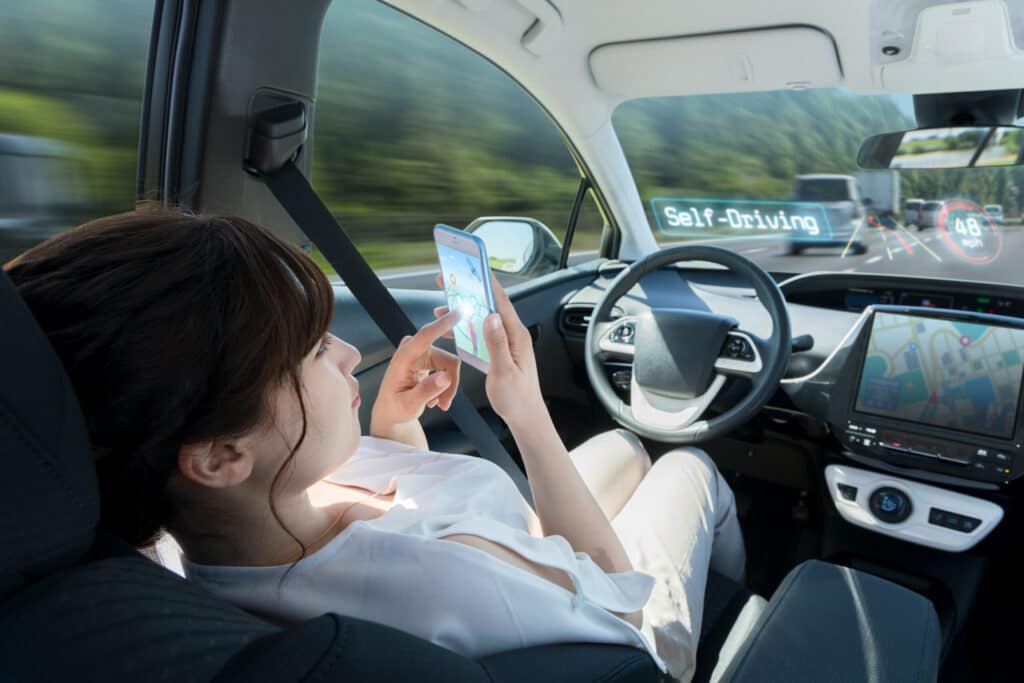
Core Technologies Powering Self-Driving Cars
Self-driving cars rely on a combination of hardware and software that work together in real time. These systems gather environmental data, process it with advanced algorithms, and use precise navigation tools to operate safely without human input.
Role of Sensors, Cameras, and Lidar
You depend on multiple sensing technologies to give a vehicle a complete view of its surroundings. Cameras capture visual details like lane markings, traffic lights, and signs. Radar measures object distance and speed, making it useful in poor visibility. Lidar creates 3D maps by using laser pulses to detect shapes and depth.
Each sensor type has strengths and weaknesses. Cameras struggle in darkness, while lidar provides accuracy but at higher cost. Radar works well in fog and rain but offers less detail. By combining these inputs, vehicles can detect pedestrians, cyclists, and other vehicles more reliably.
This sensor fusion allows the car to build a constantly updated model of the road environment. Without it, decision-making systems would lack the data needed to act safely.
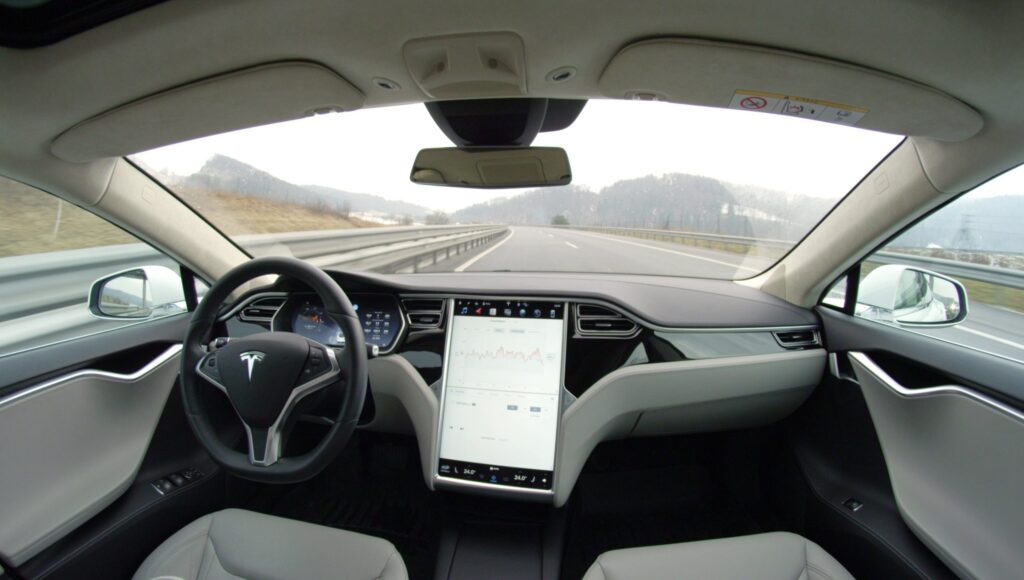
Artificial Intelligence and Decision-Making
Artificial intelligence (AI) interprets the raw data from sensors and turns it into meaningful actions. Machine learning algorithms identify patterns such as vehicle movement, pedestrian behavior, and traffic flow. These models improve over time as more driving scenarios are processed.
Neural networks play a central role in recognizing objects and predicting how they might move. For example, AI can estimate whether a pedestrian is about to cross the street or if a nearby car will merge into your lane.
Decision-making systems then translate this information into control commands for steering, braking, and acceleration. This process happens in milliseconds, ensuring the car reacts quickly to changing road conditions.
Navigation Systems: GPS and Beyond
You rely on GPS for positioning, but standard GPS lacks the precision needed for lane-level accuracy. To address this, self-driving cars use high-definition maps that include details like road curvature, lane boundaries, and traffic signals.
These maps are regularly updated to reflect construction, closures, or new road layouts. In addition, vehicles use inertial measurement units (IMUs) and wheel sensors to track movement when GPS signals weaken, such as in tunnels or dense urban areas.
By combining GPS, HD maps, and onboard motion sensors, autonomous vehicles maintain accurate localization. This ensures the car knows its exact position on the road and can follow planned routes with minimal error.
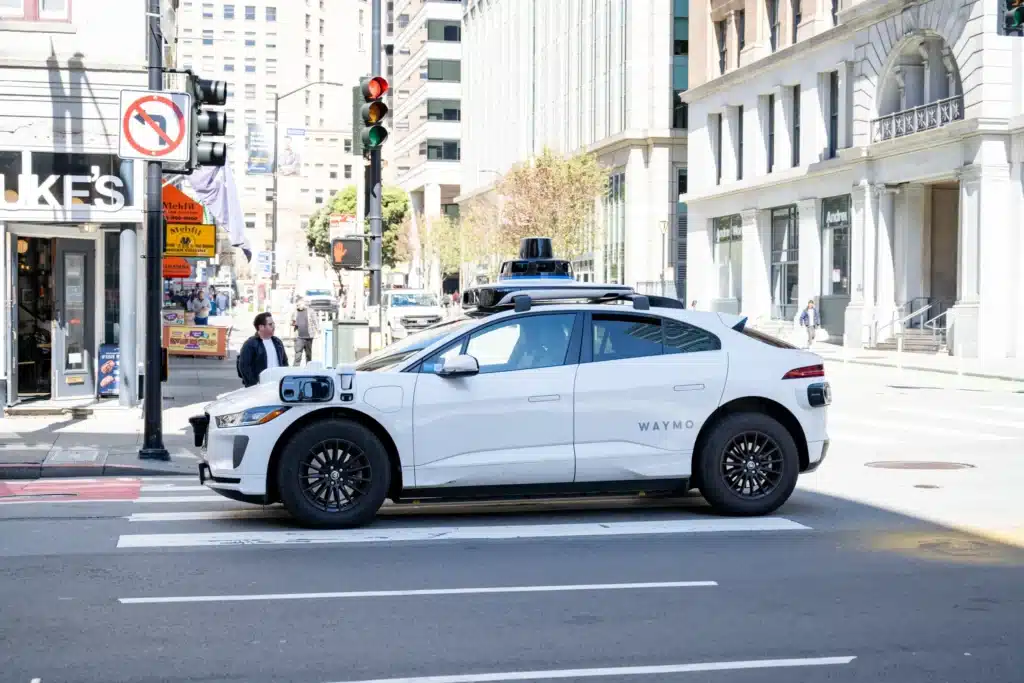
Current Landscape and Industry Leaders
You see rapid progress in autonomous driving shaped by a few dominant companies, new service models, and gradual technology rollout across the auto industry. The focus remains on safety, cost efficiency, and regulatory approval, which determine how quickly these systems scale.
Major Players: Tesla, Waymo, and Cruise
Tesla, Waymo, and Cruise represent three distinct approaches to self-driving. Tesla relies on a vision-based system using cameras and advanced neural networks, avoiding lidar sensors. This strategy emphasizes scalability through software updates pushed directly to vehicles already on the road.
Waymo, owned by Alphabet, takes a different path with a sensor-heavy setup combining lidar, radar, and cameras. Its technology prioritizes safety redundancy, which has enabled fully driverless operations in select U.S. cities.
Cruise, backed by General Motors, focuses on all-electric autonomous vehicles designed specifically for ride-hailing. Unlike Tesla’s consumer-first model, Cruise and Waymo concentrate on fleet-based deployment, which helps them control variables such as maintenance, mapping, and charging infrastructure.
| Company | Approach | Key Focus | Deployment |
|---|---|---|---|
| Tesla | Cameras + AI | Mass-market vehicles | Consumer cars |
| Waymo | Lidar + Radar + Cameras | Safety and redundancy | Robo-taxi fleets |
| Cruise | Electric AVs | Ride-hailing | Urban fleets |
Robo-Taxis and Emerging Services
Robo-taxis are moving beyond pilot projects into limited commercial services. Waymo One operates in Phoenix and San Francisco, offering fully driverless rides without safety drivers. Cruise runs similar services in San Francisco and has expanded to other cities with permission from regulators.
These services target urban areas where ride-hailing demand is high. By focusing on dense environments, companies can maximize fleet utilization while refining their navigation systems. You benefit from lower wait times and reduced costs once fleets scale, though availability remains limited to select regions.
For automakers, robo-taxis represent a new revenue model. Instead of one-time car sales, companies can generate recurring income from shared mobility services, subscription models, and logistics partnerships.
Incremental Adoption in the Auto Industry
Outside of robo-taxis, you already experience autonomous features in consumer cars. Adaptive cruise control, lane-keeping assist, and automated parking are common in new vehicles. These systems represent Level 2 autonomy, where the car handles some tasks but you must stay engaged.
Manufacturers like Ford, Mercedes-Benz, and Toyota continue to expand advanced driver-assistance systems (ADAS). Incremental rollout allows automakers to build trust while navigating regulatory hurdles.
This staged approach also reduces costs. Instead of waiting for full autonomy, you gain features that improve safety and convenience today. Over time, these capabilities will evolve into higher levels of autonomy as software, sensors, and regulations mature.
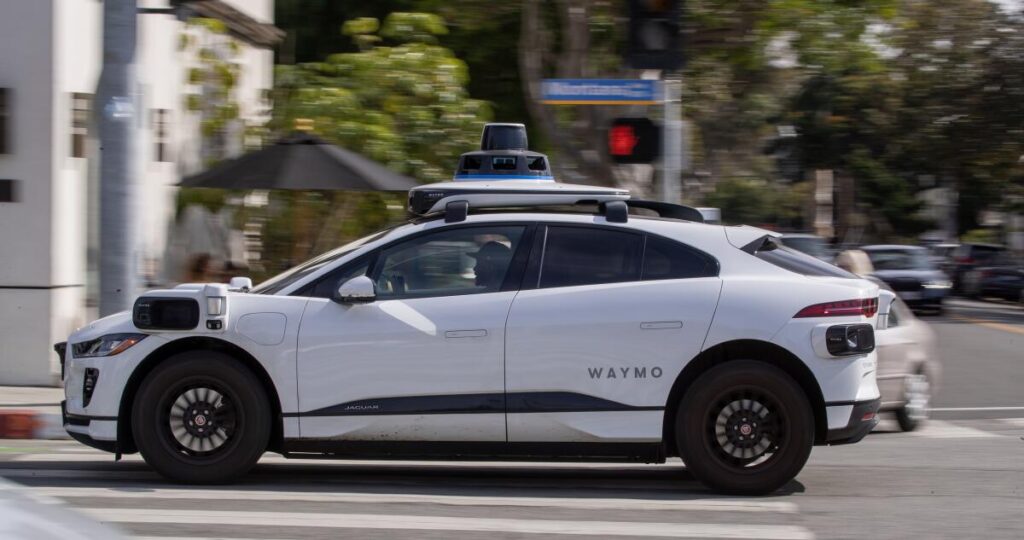
Connectivity, Infrastructure, and Road Conditions
Reliable communication networks, intelligent road systems, and adaptable driving responses are central to the safe operation of self-driving vehicles. These elements determine how effectively vehicles can interact with their surroundings, share data, and respond to real-time changes in traffic and the environment.
5G Technology and Connected Vehicles
You benefit from 5G technology because it provides low-latency communication between vehicles, infrastructure, and cloud platforms. Unlike older networks, 5G supports near-instant data transfer, which is critical when autonomous systems make split-second driving decisions.
With 5G, vehicles can exchange information about traffic congestion, accidents, and road hazards. This vehicle-to-everything (V2X) communication improves route planning and reduces collision risks. For example, a car ahead can alert yours of sudden braking before you even see it.
A key advantage lies in bandwidth. 5G supports large volumes of sensor and camera data, enabling real-time video sharing for fleet coordination. This is particularly useful for logistics companies managing autonomous trucks.
| Feature | Benefit to Self-Driving Cars |
|---|---|
| Low Latency | Faster decision-making |
| High Bandwidth | Supports multiple sensors |
| V2X Communication | Safer and coordinated driving |
Smart Infrastructure Integration
Smart infrastructure extends beyond the vehicle itself. You rely on connected traffic lights, road sensors, and digital signage to enhance navigation and safety. These systems provide vehicles with accurate data about signal timing, pedestrian crossings, and lane usage.
Cities are beginning to install smart streetlights equipped with cameras and environmental sensors. These can detect poor visibility, monitor traffic flow, and share conditions directly with vehicles. This reduces the likelihood of errors caused by limited onboard perception.
Dedicated lanes for autonomous vehicles are another step toward integration. They allow smoother traffic management and reduce unpredictable interactions with human-driven cars. By combining infrastructure data with onboard AI, your vehicle can anticipate changes more effectively.
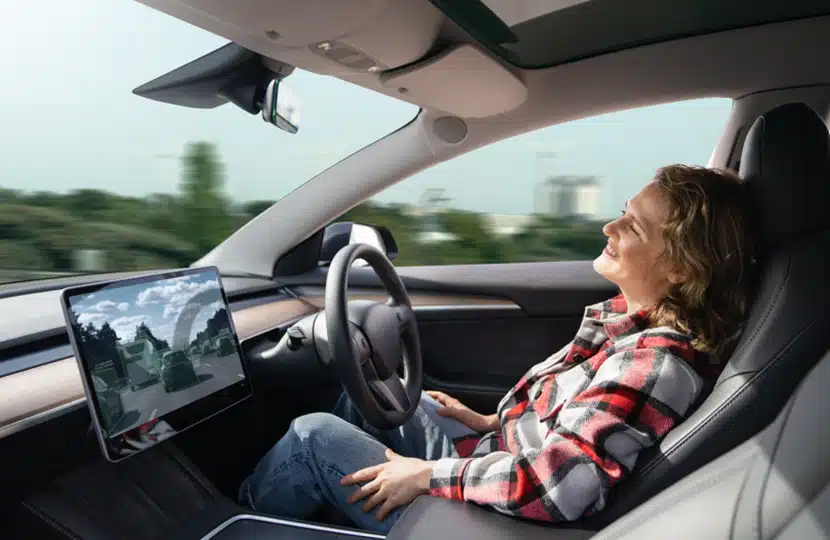
Adapting to Changing Road Conditions
Road conditions remain a challenge for autonomous driving. You encounter variables like rain, snow, potholes, and construction zones that test both sensors and algorithms. Vehicles must adapt to these conditions in real time to maintain safety.
High-definition maps, updated with sensor data, help your car recognize temporary changes such as lane closures. When combined with connectivity, these updates can be shared across the fleet, ensuring consistent awareness.
Sensors such as LiDAR and radar work together with infrastructure signals to detect obstacles hidden by weather. For example, fog may limit cameras, but radar can still provide reliable distance measurements. This redundancy ensures your vehicle can continue operating even in less-than-ideal environments.
Road maintenance also plays a role. Poorly marked lanes or damaged surfaces reduce system accuracy. As cities upgrade infrastructure, smoother integration between road conditions and autonomous navigation becomes possible.
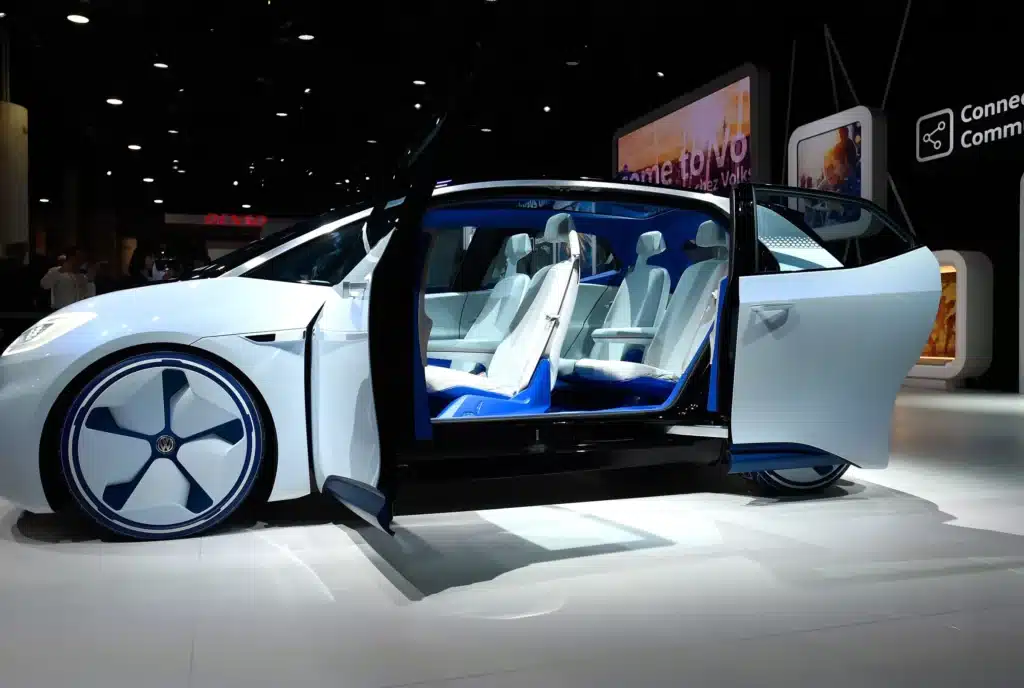
Safety, Regulation, and Public Trust
You face a transportation shift where safety performance, regulatory clarity, and public acceptance determine how widely self-driving cars will be adopted. Each area requires careful attention because technical progress alone does not guarantee trust or legal approval.
Ensuring Safety and Reducing Risks
You rely on self-driving systems to handle complex road conditions with minimal human input, which makes safety validation essential. Autonomous vehicles use sensors, artificial intelligence, and simulation testing to anticipate hazards, but these systems still struggle with unpredictable human behavior and rare edge cases.
Developers test vehicles in both controlled environments and real-world pilot programs. These trials reveal weaknesses in perception systems, decision-making algorithms, and fail-safe mechanisms. For example, incidents with robotaxis in cities highlight the need for better obstacle detection and emergency response protocols.
To reduce risks, you see manufacturers adopting layered safety strategies. These include redundant sensors, real-time monitoring, and remote human oversight when systems encounter uncertainty. Independent safety assessments and transparent reporting of crash data also help identify flaws before large-scale deployment.
Regulatory Challenges and Standards
You encounter a fragmented regulatory environment where federal, state, and local authorities set different rules for testing and deployment. In the United States, federal regulators oversee vehicle design and safety standards, while states manage licensing, insurance, and road use. This split creates inconsistencies that slow down nationwide adoption.
Current federal law limits deployment of vehicles that do not meet traditional safety requirements, such as steering wheels or pedals, to 2,500 units per manufacturer. This cap restricts scaling of fully driverless fleets. Proposals like the AMERICA DRIVES Act aim to modernize these limits and create a unified framework for commercial use.
Clearer standards on liability, data security, and performance benchmarks would give you more predictable rules to follow. Without these, companies face uncertainty about compliance, and regulators struggle to balance innovation with public protection.
Building Public Confidence
You cannot achieve widespread adoption without public trust. Surveys show that concerns about crash risks, cybersecurity, and ethical decision-making strongly influence how comfortable people feel with autonomous vehicles.
Transparency plays a key role. When companies share safety data, explain how decisions are made, and disclose limitations, you gain a clearer picture of what the technology can and cannot do. This openness reduces suspicion and builds credibility.
Public engagement also matters. Cities that involve residents in pilot programs or provide clear communication about testing zones see higher acceptance levels. Trust grows when you feel informed and see evidence of accountability through audits, third-party evaluations, and independent safety certifications.
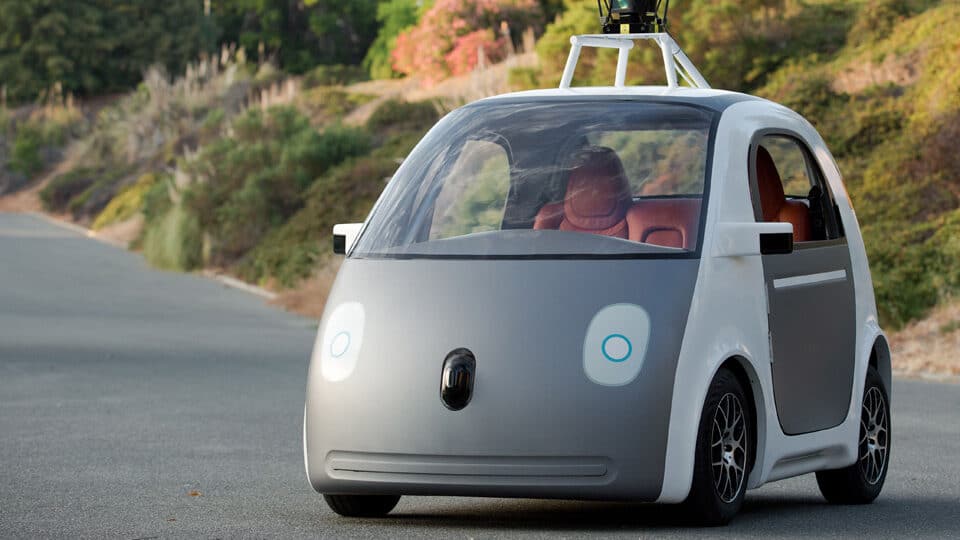
The Future Outlook for Autonomous Vehicles
You can expect self-driving technology to reshape daily transportation, influence city planning, and change how industries operate. At the same time, development faces regulatory, technical, and safety barriers that will determine how quickly autonomous vehicles become part of everyday mobility.
Potential Impact on Society and Mobility
Autonomous vehicles have the potential to change how you move through cities and suburbs. By reducing the need for private car ownership, they could support shared mobility models that lower congestion and parking demand.
You may also see benefits in accessibility. Self-driving cars can provide mobility for people who cannot drive due to age, disability, or other limitations. This could expand independence and improve quality of life for many individuals.
Safety is another major factor. Human error accounts for most road accidents today, and automated systems could lower collision rates if they prove reliable in diverse conditions. Reduced accidents would also lessen healthcare and insurance costs.
From a broader perspective, logistics and freight industries stand to gain efficiency. Automated trucks could operate longer hours without fatigue, helping stabilize supply chains and reduce delivery times.
Key Challenges and Opportunities Ahead
Despite progress, you face several barriers before autonomous vehicles become common. Technical reliability remains a concern, especially in unpredictable environments with pedestrians, cyclists, and mixed traffic.
Regulation is another obstacle. Governments must set clear safety standards, liability rules, and data privacy protections. Without consistent frameworks, deployment will remain fragmented across regions.
Cybersecurity also requires attention. Connected vehicles depend on sensors and networks, making them vulnerable to hacking or system failures. Building secure systems is critical to public trust.
On the opportunity side, advances in AI, sensors, and 5G networks improve navigation, obstacle detection, and real-time communication. Automakers, software firms, and infrastructure providers can collaborate to create safer and more efficient systems. This collaboration could also open a projected market worth hundreds of billions by 2030.
Long-Term Vision for Self-Driving Cars
In the long run, you may see autonomous vehicles integrated into smart city ecosystems. Cars could communicate with traffic signals, road sensors, and other vehicles to optimize traffic flow and reduce congestion.
Fully driverless taxis and shuttles could become common in urban centers, reducing reliance on private vehicles. Rural areas may adopt them more slowly, but fleet-based services could still provide valuable connectivity.
Energy use is another consideration. Pairing autonomous vehicles with electric drivetrains could cut emissions and support climate goals. Fleet operators would likely prioritize electric self-driving cars to reduce operating costs and comply with environmental regulations.
Looking decades ahead, autonomous vehicles could reshape urban design. Cities may require fewer parking lots, freeing land for housing, green space, or commercial use. The result would be a gradual but significant shift in how you experience transportation and the built environment.
- 0shares
- Facebook0
- Pinterest0
- Twitter0



